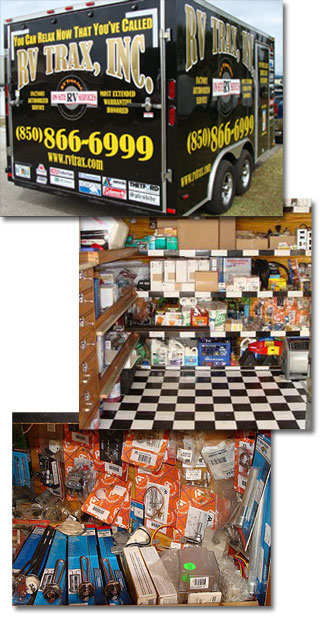SAFE OPERATION OF YOUR RV
FIRE PREVENTION
Always properly maintain the RV, including often-overlooked engine maintenance.
Never keep flammable materials around the stove, generator, or any other electrical components.
Always keep the appliances, including the generator, clean and operating properly.
Always turn the LP gas system off and beware of static electricity when refueling.
Always have at least one good fire extinguisher in an easily known accessible location.
It is better to have a few fire extinguishers at several accessible locations.
If you ever find yourself in a fire situation, the first thing to do is escape the RV to save
lives. ONLY FIGHT THE FIRE IF YOU CAN DO SO SAFELY!
ESCAPE WINDOWS, HATCHES AND DOORS
Never screw or seal an escape hatch, window or door shut. Know the locations and operations of these escape routes in case of an emergency. Fires consume RV’s quickly. If a fire is present, GET OUT IMMEDIATELY. Do not attempt to extinguish a fire until all life has exited the RV and the fire can be extinguished safely.
SMOKE DETECTORS
At least weekly, verify that the smoke detector is operating properly. Replace the battery at least once a year. A recommended addition or replacement of the existing detector is a Photoelectric Smoke Detector. It only requires a simple installation and it is more receptive to smoke from fires and less susceptible to false alarms.
CARBON MONOXIDE DETECTORS
You should have at least one detector in your bedroom mounted either to the ceiling or wall at least 8” from the ceiling or 4” up from the floor. A higher mounting location is best because Carbon Monoxide rises since it is lighter than air. Do not install close to an inside corner. Carbon Monoxide is a colorless, odorless, invisible, poisonous deadly gas that can kill without warning. When an engine or generator is running, even from
another vehicle parked next to you, it is producing this deadly gas that can enter your RV. Carbon monoxide detectors have a lifespan of 5 to 8 years.
PROPANE DETECTORS
LP or Propane gas is heavier than air, therefore the detector must be mounted close to the floor. These detectors often have a dual function. A slow beep is generally an indication of a low battery condition and a continuous beep is from propane detection. Chemicals such as cleaners, colognes, alcohol, hairsprays or sewer gasses can cause the detector to activate a false alarm. NEVER DISCONNECT AN LP DETECTOR. Test the detector at least monthly. Many propane detectors are connected to an LP valve that will turn off the LP gas when the alarm is activated.
BATTERY SAFETY
Batteries emit hydrogen gas that is explosive, therefore batteries must be properly vented to the outside atmosphere. Check the battery electrolyte fluid monthly and fill with distilled water only. Keep the caps tight and the battery clean. If the battery appears swollen or damaged, replace it immediately. For more information see the article BATTERY MAINTENANCE.
GENERATOR SAFETY
Keep the generator’s fluid levels full, clean and properly maintained. NEVER use the generator compartment for storage. Inspect the fuel lines and exhaust for cracks or leaks. The exhaust tail pipe should protrude at least 1 inch past the exterior wall edge of the RV. When operating the generator, try to park your RV with the exhaust facing down wind, to carry the fumes away from the unit.
TIRE SAFETY
Check the tire pressures, including the spare tire before any trip. Inspect the tires for any visual defects present and replace every 5 to 7 years. Tires should be rated for the load of your vehicle. See the article TIRE FAILURE for more information.
EXTERIOR INSPECTION
Before leaving with the RV, check that all fluids, exterior lights, wipers and horn are operating properly. Also, check for fluid or exhaust leaks, ensure that the antenna, awning, slide out and leveling systems are retracted and locked. Make sure that all hoses, cords and cargo are stored properly.
TOWING
When towing an RV, trailer or a tow vehicle, test the operation of the turn signals, parking lights and brake lights. Manually engage the brake controller while rolling, to verify that the brakes are operating properly. Follow the manufacturers instructions for the towed vehicle.
These are just a few of the many issues of concern. I hope that this article will help you become better prepared, have a safe trip and avoid many potential problems. Remember, common sense goes a long ways towards safety. For additional information you can call a qualified professional at (850) 866-6999 or visit https://www.rvsafety.org



